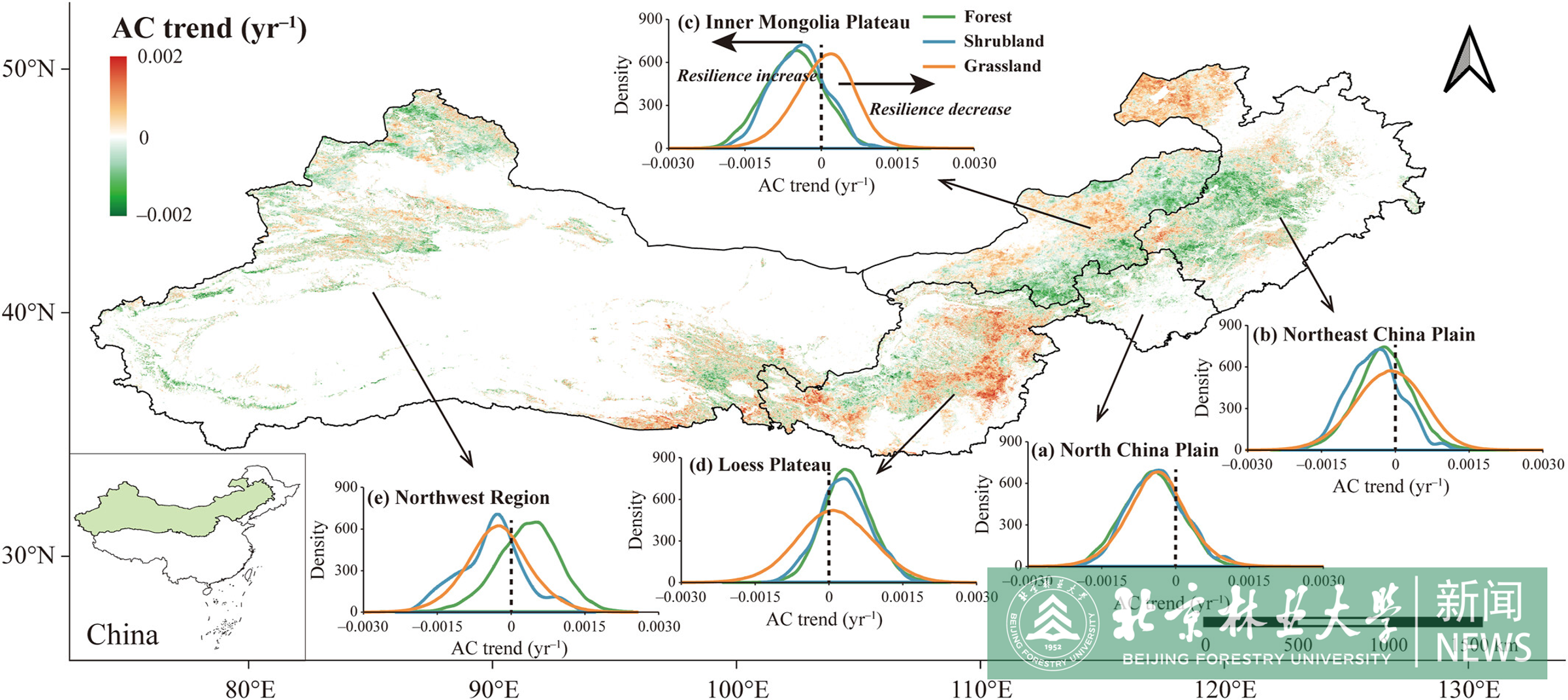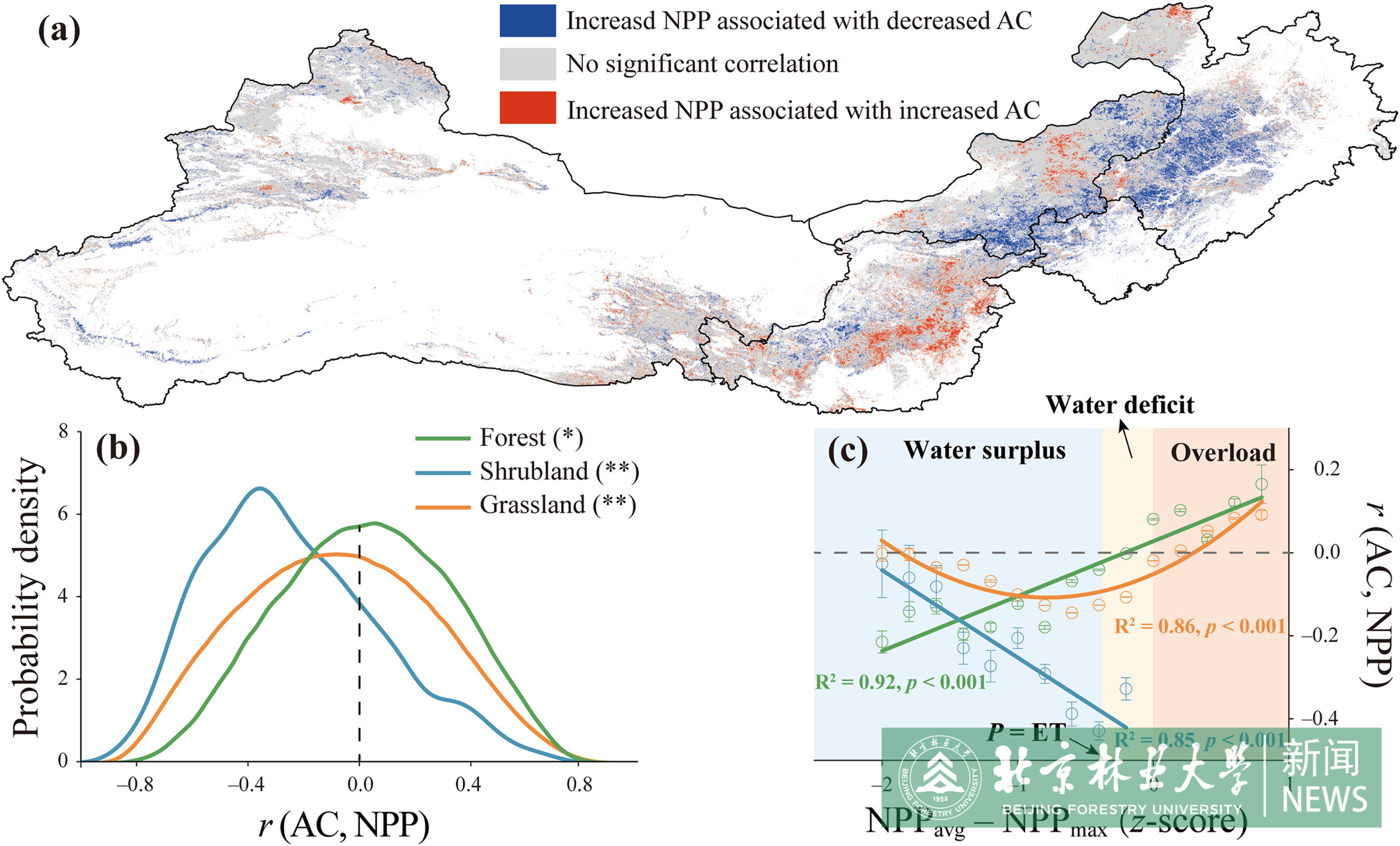Latest news
A groundbreaking study from Beijing Forestry University's School of Soil and Water Conservation has revealed critical water constraints facing China's Three-North Shelterbelt Forest Program, the world's largest ecological restoration project. Published in Geophysical Research Letters, the research provides new insights into maintaining the massive initiative's long-term sustainability.


Large-scale ecological restoration is a key nature-based solution to environmental challenges. However, the resilience of such initiatives is debated due to increasing water consumption. This study examined China's Three-North Shelterbelt Forest Program, the world's largest ecological restoration project, to assess how water regulated vegetation resilience from 2001 to 2022 and projected future vegetation suitability by integrating meteorological observations, remote sensing data, and Global Circulation Models. We found that approximately 48.2% of vegetation, particularly forests, experienced declining resilience despite greening. Resilience increased with productivity within water resources carrying capacity but decreased when exceeded. Forest resilience peaked when precipitation was fully utilized, whereas grassland resilience was lowest at this equilibrium. By 2050, 1.8% of the area is projected to face degradation risks, with an additional 11.1% at potential risk under the SSP2-4.5 scenario. Overall, the findings highlight the necessity of integrating water resources constraints into ecological restoration strategies for sustained effectiveness.

The first author of this paper is Associate Professor Xu Xing from the School of Soil and Water Conservation, and the corresponding author is Professor Zhang Zhiqiang.
This research was funded by the National Key Research and Development Program of China (Grant 2022YFF1302501), the Fundamental Research Funds for the Central Universities (Grant JCYJ202507), the Young Elite Scientist Sponsorship Program by CAST (Grant YESS20230091), the National Natural Science Foundation of China (Grants 32301664 and 32271967), the Major Scientific and Technological Project of the Inner Mongolia Autonomous Region (Grant 2024JBGS0023-2-1), and National Forestry and Grassland Administration Unveiling and Commanding Project (Grant 202401-07).
Paper: https://doi.org/10.1029/2025GL116914
Written by Xu Hang
Translated and edited by Song He
Reviewed by Yu Yangyang












